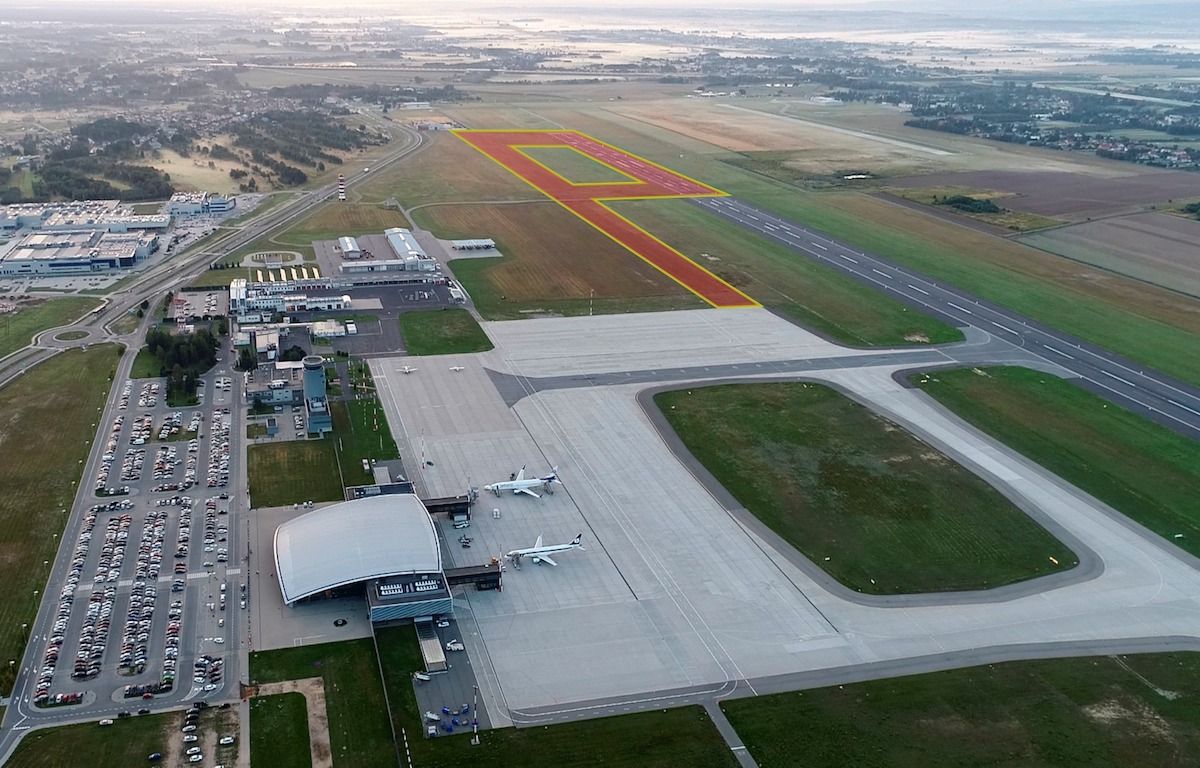Rzeszów airport – money from EU for expansion
This is what the eastern part of the airport will look like after the first investment is completed. The added and renovated part is marked in red / photo. Rzeszów Airport archive.
Rzeszów – Jasionka Airport may receive over €16.5 million in subsidies for important infrastructure investments.
The Connecting Europe Facility (CEF) Transport Coordinating Committee has just approved the European Commission’s recommendation to award funding for selected military mobility and alternative fuel infrastructure projects.
Among the six Polish projects selected from a total of 22 under the Connecting Europe Facility, as many as two were prepared by the airport in Jasionka near Rzeszów. Both received recognition under the thematic area of ‘Adaptation of the TEN-T network for dual civil-military use (dual use) within the framework of military mobility’. Military Mobility)”.
What are the projects?
1. Construction of the second stage of the parallel taxiway and the first stage of the reconstruction of the runway on the section of 700 m together with the technical infrastructure.
2. Phase II of the 1800 m runway reconstruction along with the technical infrastructure.
Both projects were highly rated, each received 19 points out of 25 possible and are recommended for funding. For investments estimated at a total of more than 33 million euros, the airport in Rzeszów may receive 50 percent subsidies from the European Commission.
Marshal of the Podkarpackie Region, Władysław Ortyl, said: “The pandemic period has hit both airports and airlines very hard. It was a particularly difficult time for regional airports such as ours in Jasionka, hence my special position at the Regions Committee on this issue.
Recommendation for funding as many as two investments is a great honor for our airport and a chance. In fact, the pandemic is not over yet, and the airport has faced another great challenge of receiving hundreds of airplanes from all over the world. It is coping with this task very well, but this process shows where we still need to invest in our airport infrastructure. This will be an important step in the development of Jasionka. I would also like to thank the Ministry of Funds and Regional Policy as well as the European Commission for their help in applying for funding.”
The Podkarpackie Province is the majority shareholder in the airport near Rzeszow.
The second is the State Enterprise “Airports” (PPL).
Stanisław Wojtera, president of PPL, emphasized: “Rzeszów – Jasionka airport is an important point on the map of Polish transport infrastructure. As a cargo port, serving among others the domestic “Aviation Valley”, it will complement and support the functioning of the Central Communications Port.
Development of airport near Rzeszow is also an investment in Polish security. I am glad that the activities of the airport’s management, in which PPL is a shareholder, have been appreciated and the presented projects have received such a high rating.”Adam Hamryszczak, president of the airport, added: “These investment tasks are part of the long-term development strategy of our airport. I do not hide the fact that it is a huge challenge, but in order to think about further development of the airport we must set ourselves ambitious goals and look for available sources of financing.”
Rebuilding the runway 700 m from the eastern threshold (marked 27) will significantly improve its load capacity and increase its durability by applying a cement concrete surface. The same surface already has the part of the runway on the west side that was modernized in 2013 (09).
While the central part of the 1800 m long runway will also receive a new, durable structure designed for asphalt concrete surfaces. Such a solution in the central part of the runway will allow for its optimal exploitation.
In addition, the first project will involve the construction of a parallel taxiway with a length of approx. 1240 m with shoulders, which will further improve the airport’s operational capacity in the eastern runway threshold area and increase the capacity of the existing runway.
Adam Hamryszczak assessed: “This, in turn, will translate into the possibility of increasing the frequency, as well as the safety of conducted air operations.”


